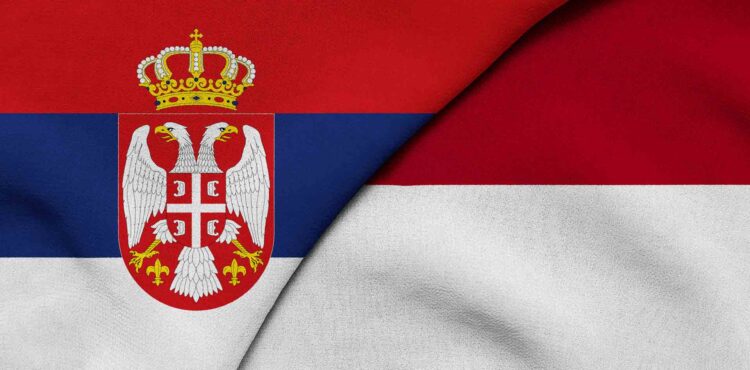THE EXCURSION TO KIKINDA
On Saturday, September 21st, NUSANTARA visited Kikinda. The date was not randomly selected – a pumpkin festival, internationally known as “The Pumpkin Days“, was held in Kikinda that Saturday. That sunny day of September, members of the NUSANTARA Association of Serbian-Indonesian Friendship attended one of the five most frequented business manifestations in Serbia, which usually gathers over 100.000 visitors from Serbia, Hungary and Romania.
In the Historical Archive of Kikinda, located in the National Museum of Kikinda on the main city square, the excursionists were served some refreshments, entertained by some tambura players. Along the building of the former courthouse, members of the NUSANTARA Association of Serbian-Indonesian Friendship were led by young Mr. Dragan Kiurski, museum educator, who eagerly talked to his guests about the past of the city not counting more than 260 years of history. Mr. Kiurski also showed the visitors the biggest object exposed in the National Museum of Kikinda – the Kika mammoth, named after the city, since 2006 representing an exclusive item in the house of the former magistrate, having its plastic replica in the interior yard of the museum.
After the tour of the house of the magistrate, the visitors were left enough time at disposal for participating in “The Pumpkin Days“ manifestation, as well as for the sightseeing. A special attraction for the excursionists was a walk along “The 22nd most beautiful street in the world“ – citizens of Kikinda are especially proud of the General Drapšin St., claiming its splendour when leaves start turning yellow!
Accompanied by Miss Jelena Matić, geography teacher who had welcomed them to Kikinda and had been their guide through the city, members of the NUSANTARA Association of Serbian-Indonesian Friendship visited the „TERRA“ workshop, since 1982 known for its international gathering held each July. Mr. Milan Ramaji, technical clerk and assistant at the „TERRA“ workshop, explained the visitors the process of selection of artists who would be given a possibility to participate in and the best conditions to create in this singular art colony, known for its monolithic statues, ranging from 2.5 to 4 m of hight.
At the „TERRA“ gallery, members of the NUSANTARA Association of Serbian-Indonesian Friendship would be afterward shown some selected works of some of 300 artists, who have passed through the workshop of the same name, owned by the city of Kikinda. The gallery represents a museum in the open air; it was inaugurated on December 5th, 2017, on professor and academic sculptor Slobodan Kojić’s initiative. The estate covering 2.100 m², serving for the training of war horses in the times of Austro-Hungarian monarchy, and transformed into barracks in former Yugoslavia, was recognized by professor Kojić as an ideal space for displaying the collection amounting around 1.000 sculptures of terracotta. Some 282 objects have been on display at the gallery itself.
Besides the collection of warriors of emperor Chin Shih and ancient Etrurian culture, art history hasn’t known a more important collection of terracotta sculptures by now. Kikinda possesses the greatest collection of large format sculptures coming from abroad, as well as national ones, which made the state recognize the „TERRA“ gallery as a great value of national significance, now known to members of the NUSANTARA Association of Serbian-Indonesian Friendship, as well.
The Saturday excursion ended in Zrenjanin, with a visit to the monastery dedicated to St. Melania the Roman, which is effectively the only monastery in Serbia devoted to this saint. The small monastery, erected thanks to contributions, celebrated its slava day – Mala Gospojina – on September 21st. Members of the NUSANTARA Association of Serbian-Indonesian Friendship wished a happy religious holiday to mother Vasilija, Nevenka by her secular name, who had welcomed them, showed them the temple from 1935 and prepared abundant refreshments for them.
Biljana Đorđević
Photos: Oliver Dimić, Vladimir Ilić, Marko Jelić, Sonja Lapatanov i Biljana Đorđević.


























